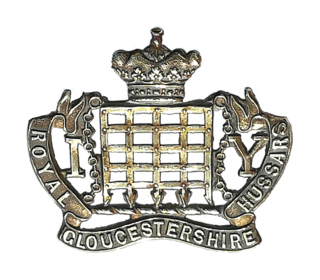 W
WThe Royal Gloucestershire Hussars was a volunteer yeomanry regiment which, in the 20th century, became part of the British Army Reserve. It traced its origins to the First or Cheltenham Troop of Gloucestershire Gentleman and Yeomanry raised in 1795, although a break in the lineage means that its formation is dated to the Marshfield and Dodington Troop raised in 1830. Six further troops – officered by nobility and gentry, and recruited largely from among landholders and tenant farmers – were subsequently raised in Gloucestershire, and in 1834 they came together to form the Gloucestershire Yeomanry Cavalry. In 1847, the regiment adopted a hussar uniform and the name Royal Gloucestershire Hussars. Originally intended to counter insurrection and a French invasion that never materialised, the yeomanry's first deployments were ceremonial and as mounted police during times of civil unrest. Three Gloucestershire troops were deployed to Bristol on two separate occasions in the 1830s in support of the civil authorities.
 W
WThe 6th Battalion, Gloucestershire Regimen, was a Territorial Force unit of the British Army. Originally recruited in Gloucestershire as a Volunteer battalion of the Gloucestershire Regiment during the Second Boer War, it fought on the Western Front and in Italy during World War I. In the late 1930s it was converted into an armoured regiment and served as such during and after World War II
 W
WThe 5th Battalion, Lincolnshire Regiment, was a volunteer unit of Britain's Territorial Army from 1900 until 1967, serving as infantry on the Western Front during the First World War and as an air defence unit during and after the Second World War.
 W
WThe Glamorgan Yeomanry was a Yeomanry regiment of the British Army originally raised in the late eighteenth century as a result of concern over the threat of invasion by the French. It was re-raised in the Second Boer War and saw service in both World War I and World War II. The lineage is maintained by C Troop, 211 Battery, 104th Regiment Royal Artillery.
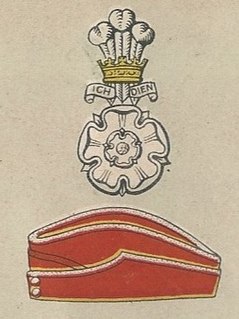 W
WThe Yorkshire Hussars was an auxiliary unit of the British Army formed in 1794. The regiment was formed as volunteer cavalry (Yeomanry) in 1794 during the French Revolutionary Wars and served in the Second Boer War and World War I. It was converted to an armoured role during World War II. In 1956, it merged with two other Yorkshire yeomanry regiments to form the Queen's Own Yorkshire Yeomanry. Its lineage is continued today by the Queen's Own Yeomanry.
 W
WThe Queen's Own Yorkshire Dragoons was a yeomanry regiment of the British Army in existence from 1794 to 1956. It was formed as a volunteer cavalry force in 1794 during the French Revolutionary Wars. Its volunteer companies played an active role with the Imperial Yeomanry in the Second Boer War, but opportunities for mounted action were much more restricted during World War I and it was temporarily converted into a cycle unit. It remained a cavalry regiment throughout the interwar years, and was the last horsed unit of the British Army to see action, in the Syria–Lebanon Campaign of 1941, finally mechanising the following year. It served as motorised infantry in the North African and Italian campaigns of World War II. In 1956, it merged with the Yorkshire Hussars and the East Riding of Yorkshire Yeomanry to form the Queen's Own Yorkshire Yeomanry. Its lineage is continued today by A Squadron, the Queen's Own Yeomanry.
 W
WThe City of London Yeomanry was a yeomanry regiment of the British Territorial Army, formed in 1901 from veterans of the Second Boer War. In World War I it served dismounted in the Gallipoli Campaign but reverted to the mounted role in the Senussi campaign, at Salonika and in Palestine. It ended the war as a machine gun unit on the Western Front. In the interwar years it was reduced to a battery in a composite Royal Horse Artillery unit in London, but in the period of rearmament before World War II it was expanded into a full regiment of light anti-aircraft artillery. It served in this role during The Blitz and later in the Tunisian and Italian campaigns. Postwar it became an armoured regiment. It amalgamated with the Inns of Court Regiment to form the Inns of Court & City Yeomanry in 1961. The lineage is maintained by 68 Signal Squadron, part of 71 (Yeomanry) Signal Regiment.
 W
WThe Middlesex Yeomanry was a volunteer cavalry regiment of the British Army originally raised in 1797. It saw mounted and dismounted action in the Second Boer War and in World War I at Gallipoli, Salonika and in Palestine, where one of its officers won a Victoria Cross at the Battle of Buqqar Ridge and the regiment rode into Damascus with 'Lawrence of Arabia'. Between the world wars the regiment was converted to the signals role and it provided communications for armoured formations in World War II, including service in minor operations in Iraq, Palestine, Syria and Iran, as well as the Western Desert, Italian and North-West European campaigns. It continued in the postwar Territorial Army and its lineage is maintained today by 31 Signal Squadron, Royal Corps of Signals, which forms part of the Army Reserve.
 W
WThe 34th Infantry Division Band is an Army National Guard band stationed in Rosemount, Minnesota. The unit is currently assigned to the Headquarters and Headquarters Battalion, 34th Infantry Division, Minnesota National Guard. The mission of the 34th Infantry Division Band is to provide music throughout the spectrum of military operations to instill in soldiers the will to fight and win, foster the support of citizens and promote the national interests of the United States at home and abroad.
 W
WThe Middlesex Yeomanry was a volunteer cavalry regiment of the British Army originally raised in 1797. It saw mounted and dismounted action in the Second Boer War and in World War I at Gallipoli, Salonika and in Palestine, where one of its officers won a Victoria Cross at the Battle of Buqqar Ridge and the regiment rode into Damascus with 'Lawrence of Arabia'. Between the world wars the regiment was converted to the signals role and it provided communications for armoured formations in World War II, including service in minor operations in Iraq, Palestine, Syria and Iran, as well as the Western Desert, Italian and North-West European campaigns. It continued in the postwar Territorial Army and its lineage is maintained today by 31 Signal Squadron, Royal Corps of Signals, which forms part of the Army Reserve.
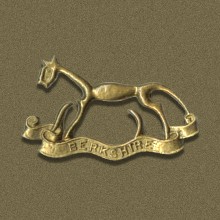 W
WThe Berkshire Yeomanry was an auxiliary regiment of the British Army formed in 1794 to counter the threat of invasion during the French Revolutionary Wars. It was the Royal County of Berkshire's senior volunteer unit with over 200 years of voluntary military service. After taking part in the Second Boer War, it saw action as mounted troops in the First World War and as artillery in the Second World War. Its lineage is maintained by 94 Signal Squadron, part of 39 (Skinners) Signal Regiment. The Headquarters of the Squadron is based in Windsor, Berkshire. The Berkshire Yeomanry had a number of battle honours won from Europe to the Far East and Private Frederick Potts was awarded a Victoria Cross for service during the Gallipoli Campaign.
 W
WThe Hampshire Yeomanry was a yeomanry cavalry regiment formed by amalgamating older units raised between 1794 and 1803 during the French Revolutionary Wars. It served in a mounted role in the Second Boer War and World War I, and in the air defence role during and after World War II. The lineage is continued by 295 Battery and 457 Battery, batteries of 106 (Yeomanry) Regiment Royal Artillery, part of the Army Reserve.
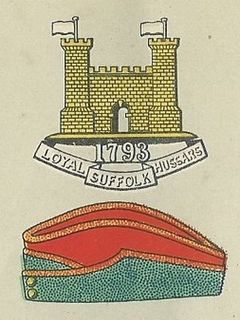 W
WThe Duke of Yorks Own Loyal Suffolk Hussars was a Yeomanry regiment of the British Army. Originally formed as a volunteer cavalry force in 1793, it fought in the Second Boer war as part of the Imperial Yeomanry. In the World War I the regiment fought at Gallipoli, in Palestine and on the Western Front. The unit was subsequently converted into a Royal Artillery unit, serving in the anti-tank role North Africa, Italy and France during World War II. The lineage is maintained by No. 677 Squadron AAC.
 W
WThe Duke of Yorks Own Loyal Suffolk Hussars was a Yeomanry regiment of the British Army. Originally formed as a volunteer cavalry force in 1793, it fought in the Second Boer war as part of the Imperial Yeomanry. In the World War I the regiment fought at Gallipoli, in Palestine and on the Western Front. The unit was subsequently converted into a Royal Artillery unit, serving in the anti-tank role North Africa, Italy and France during World War II. The lineage is maintained by No. 677 Squadron AAC.
 W
WThe 46th Punjabis were an infantry regiment of the British Indian Army. It was raised in 1900, as the 46th (Punjab) Regiment of Bengal Infantry. It was designated as the 46th Punjabis in 1903 and became 10th (Training) Battalion of 16th Punjab Regiment in 1922. In 1943, it was converted into the 16th Punjab Regimental Centre. In 1947, the 16th Punjab Regiment was allocated to the Pakistan Army. In 1956, the 1st, 14th, 15th and 16th Punjab Regimental Centres where amalgamated to form the Punjab Regimental Centre.
 W
WThe Hampshire Yeomanry was a yeomanry cavalry regiment formed by amalgamating older units raised between 1794 and 1803 during the French Revolutionary Wars. It served in a mounted role in the Second Boer War and World War I, and in the air defence role during and after World War II. The lineage is continued by 295 Battery and 457 Battery, batteries of 106 (Yeomanry) Regiment Royal Artillery, part of the Army Reserve.
 W
WThe Berkshire Yeomanry was an auxiliary regiment of the British Army formed in 1794 to counter the threat of invasion during the French Revolutionary Wars. It was the Royal County of Berkshire's senior volunteer unit with over 200 years of voluntary military service. After taking part in the Second Boer War, it saw action as mounted troops in the First World War and as artillery in the Second World War. Its lineage is maintained by 94 Signal Squadron, part of 39 (Skinners) Signal Regiment. The Headquarters of the Squadron is based in Windsor, Berkshire. The Berkshire Yeomanry had a number of battle honours won from Europe to the Far East and Private Frederick Potts was awarded a Victoria Cross for service during the Gallipoli Campaign.
 W
W58 Field Squadron is currently an Explosive Ordnance Disposal (EOD) unit of the Royal Engineers (RE). In its long history its predecessors have fulfilled the roles of artisans, field engineers, chemical warfare specialists, and road builders. They saw active service on the Western Front in World War I and in the Battle of France and Burma Campaign during World War II. On two occasions, the unit's sappers were reputed to have repulsed enemy attacks at the point of the bayonet.
 W
WThe Middlesex Yeomanry was a volunteer cavalry regiment of the British Army originally raised in 1797. It saw mounted and dismounted action in the Second Boer War and in World War I at Gallipoli, Salonika and in Palestine, where one of its officers won a Victoria Cross at the Battle of Buqqar Ridge and the regiment rode into Damascus with 'Lawrence of Arabia'. Between the world wars the regiment was converted to the signals role and it provided communications for armoured formations in World War II, including service in minor operations in Iraq, Palestine, Syria and Iran, as well as the Western Desert, Italian and North-West European campaigns. It continued in the postwar Territorial Army and its lineage is maintained today by 31 Signal Squadron, Royal Corps of Signals, which forms part of the Army Reserve.
 W
WThe Queen's Own Yorkshire Dragoons was a yeomanry regiment of the British Army in existence from 1794 to 1956. It was formed as a volunteer cavalry force in 1794 during the French Revolutionary Wars. Its volunteer companies played an active role with the Imperial Yeomanry in the Second Boer War, but opportunities for mounted action were much more restricted during World War I and it was temporarily converted into a cycle unit. It remained a cavalry regiment throughout the interwar years, and was the last horsed unit of the British Army to see action, in the Syria–Lebanon Campaign of 1941, finally mechanising the following year. It served as motorised infantry in the North African and Italian campaigns of World War II. In 1956, it merged with the Yorkshire Hussars and the East Riding of Yorkshire Yeomanry to form the Queen's Own Yorkshire Yeomanry. Its lineage is continued today by A Squadron, the Queen's Own Yeomanry.
 W
WThe City of London Yeomanry was a yeomanry regiment of the British Territorial Army, formed in 1901 from veterans of the Second Boer War. In World War I it served dismounted in the Gallipoli Campaign but reverted to the mounted role in the Senussi campaign, at Salonika and in Palestine. It ended the war as a machine gun unit on the Western Front. In the interwar years it was reduced to a battery in a composite Royal Horse Artillery unit in London, but in the period of rearmament before World War II it was expanded into a full regiment of light anti-aircraft artillery. It served in this role during The Blitz and later in the Tunisian and Italian campaigns. Postwar it became an armoured regiment. It amalgamated with the Inns of Court Regiment to form the Inns of Court & City Yeomanry in 1961. The lineage is maintained by 68 Signal Squadron, part of 71 (Yeomanry) Signal Regiment.
 W
WThe City of London Yeomanry was a yeomanry regiment of the British Territorial Army, formed in 1901 from veterans of the Second Boer War. In World War I it served dismounted in the Gallipoli Campaign but reverted to the mounted role in the Senussi campaign, at Salonika and in Palestine. It ended the war as a machine gun unit on the Western Front. In the interwar years it was reduced to a battery in a composite Royal Horse Artillery unit in London, but in the period of rearmament before World War II it was expanded into a full regiment of light anti-aircraft artillery. It served in this role during The Blitz and later in the Tunisian and Italian campaigns. Postwar it became an armoured regiment. It amalgamated with the Inns of Court Regiment to form the Inns of Court & City Yeomanry in 1961. The lineage is maintained by 68 Signal Squadron, part of 71 (Yeomanry) Signal Regiment.
 W
WThe City of London Yeomanry was a yeomanry regiment of the British Territorial Army, formed in 1901 from veterans of the Second Boer War. In World War I it served dismounted in the Gallipoli Campaign but reverted to the mounted role in the Senussi campaign, at Salonika and in Palestine. It ended the war as a machine gun unit on the Western Front. In the interwar years it was reduced to a battery in a composite Royal Horse Artillery unit in London, but in the period of rearmament before World War II it was expanded into a full regiment of light anti-aircraft artillery. It served in this role during The Blitz and later in the Tunisian and Italian campaigns. Postwar it became an armoured regiment. It amalgamated with the Inns of Court Regiment to form the Inns of Court & City Yeomanry in 1961. The lineage is maintained by 68 Signal Squadron, part of 71 (Yeomanry) Signal Regiment.
 W
WThe City of London Yeomanry was a yeomanry regiment of the British Territorial Army, formed in 1901 from veterans of the Second Boer War. In World War I it served dismounted in the Gallipoli Campaign but reverted to the mounted role in the Senussi campaign, at Salonika and in Palestine. It ended the war as a machine gun unit on the Western Front. In the interwar years it was reduced to a battery in a composite Royal Horse Artillery unit in London, but in the period of rearmament before World War II it was expanded into a full regiment of light anti-aircraft artillery. It served in this role during The Blitz and later in the Tunisian and Italian campaigns. Postwar it became an armoured regiment. It amalgamated with the Inns of Court Regiment to form the Inns of Court & City Yeomanry in 1961. The lineage is maintained by 68 Signal Squadron, part of 71 (Yeomanry) Signal Regiment.
 W
WThe Algonquin Regiment is a Primary Reserve infantry regiment of the Canadian Army comprising two companies. A Company is located in North Bay, Ontario, and B Company is located in Timmins, Ontario. The regiment falls under the command of the 4th Canadian Division's 33 Canadian Brigade Group.
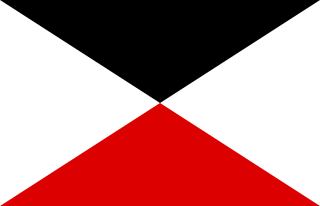 W
WThe III Royal Bavarian Army Corps / III Bavarian AK was a corps level command of the Royal Bavarian Army, part of the German Army, before and during World War I.
 W
WThe Tower Hamlets Engineers was a Volunteer unit of the British Royal Engineers (RE) based in East London. Raised in 1868, it provided engineers for two London infantry divisions of the Territorial Force during World War I. In World War II it operated as an RE headquarters, particularly on D-Day and at the Rhine Crossing, while its subordinate companies served in a number of campaigns, including the Siege of Tobruk and with the Chindits. Its successor unit continues to serve in today's Army Reserve.
 W
WThe Irish Guards (IG), is one of the Foot Guards regiments of the British Army and is part of the Guards Division. Together with the Royal Irish Regiment, it is one of the two Irish infantry regiments in the British Army. The regiment has participated in campaigns in the First World War, the Second World War, the Iraq War and the War in Afghanistan as well as numerous other operations throughout its history. The Irish Guards claim six Victoria Cross recipients, four from the First World War and two from the Second World War.
 W
WThe Liverpool Scottish, known as "the Scottish", was a unit of the British Army, part of the Army Reserve, raised in 1900 as an infantry battalion of the King's. The Liverpool Scottish became affiliated to the Queen's Own Cameron Highlanders in the 1920s and formally transferred to the regiment in 1937 with its identity preserved. Reflecting the Territorial Army's decline in size since the late 1940s, the battalion was reduced to a company in 1967, then to a platoon of "A" (King's) Company, King's and Cheshire Regiment in 1999. In 2006, the company was incorporated into the 4th Battalion, Duke of Lancaster's Regiment.
 W
WThe Lovat Scouts was a British Army unit first formed during the Second Boer War as a Scottish Highland yeomanry regiment of the British Army. They were the first known military unit to wear a ghillie suit and in 1916 formally became the British Army's first sniper unit, then known as "sharpshooters". It served in the First World War and the Second World War and today forms A Company within the 2nd Battalion, 51st Highland Volunteers.
 W
WThe New South Wales Imperial Bushmen was a mounted regiment, consisting of six rifle squadrons, raised in the New South Wales colony for service during the Second Boer War.
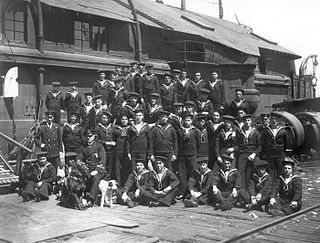 W
WThe Newfoundland Royal Naval Reserve was a military reserve force founded in 1900 in what was then the Newfoundland Colony, a part of the British Empire. From 1900 to 1902, approximately 50 members of the reserve trained each winter with the North American and West Indies squadron of the Royal Navy until a steam and sail powered training ship, HMS Calypso, was provided by the United Kingdom in 1902 for local drills before at-sea training with the NA and WI squadron. The reserve had 375 members by late 1903 and then between five and six hundred reservists until the start of World War I, growing to over 1000 in 1915. 1,964 Newfoundlanders served with the Naval Reserve in World War I, suffering 192 fatalities. The Reserve disbanded in 1920-1921. Calypso, having been renamed HMS Briton, was sold as a storage hulk and was burned for salvage near Lewisporte, Newfoundland and Labrador.
 W
WThe Scottish Horse was a Yeomanry regiment of the British Army's Territorial Army raised in 1900 for service in the Second Boer War. It saw heavy fighting in both the First World War, as the 13th Battalion, Black Watch, and in the Second World War, as part of the Royal Artillery. It amalgamated with the Fife and Forfar Yeomanry to form the Fife and Forfar Yeomanry/Scottish Horse in 1956. The lineage is maintained by "C" Fife and Forfar Yeomanry/Scottish Horse Squadron of The Scottish and North Irish Yeomanry based in Cupar in Fife.
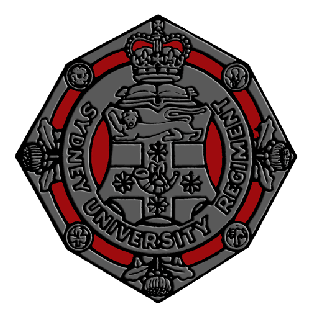 W
WSydney University Regiment (SUR) is an officer-training regiment of the Australian Army Reserve. Its predecessor, the University Volunteer Rifle Corps, was raised in 1900 as a unit of the colonial New South Wales Defence Force. During the 20th century, several changes of name and role occurred. Sydney University Regiment is headquartered in Holsworthy Barracks and has detachments in Sydney, Canberra and Wollongong.